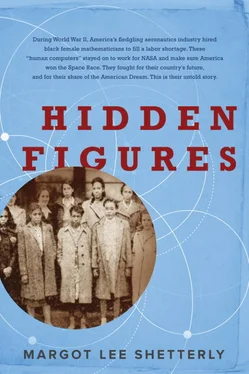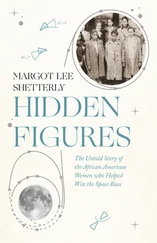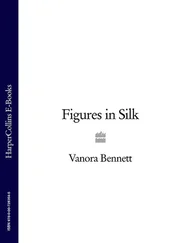Unless, of course, Melvin Butler failed to feed the three-shift-a-day, six-day-a-week operation with fresh minds. The engineers were one thing, but each engineer required the support of a number of others: craftsmen to build the airplane models tested in the tunnels, mechanics to maintain the tunnels, and nimble number crunchers to process the numerical deluge that issued from the research. Lift and drag, friction and flow. What was a plane but a bundle of physics? Physics, of course, meant math, and math meant mathematicians. And since the middle of the last decade, mathematicians had meant women. Langley’s first female computing pool, started in 1935, had caused an uproar among the men of the laboratory. How could a female mind process something so rigorous and precise as math? The very idea, investing $500 on a calculating machine so it could be used by a girl! But the “girls” had been good, very good—better at computing, in fact, than many of the engineers, the men themselves grudgingly admitted. With only a handful of girls winning the title “mathematician”—a professional designation that put them on equal footing with entry-level male employees—the fact that most computers were designated as lower-paid “subprofessionals” provided a boost to the laboratory’s bottom line.
But in 1943, the girls were harder to come by. Virginia Tucker, Langley’s head computer, ran laps up and down the East Coast searching for coeds with even a modicum of analytical or mechanical skill, hoping for matriculating college students to fill the hundreds of open positions for computers, scientific aides, model makers, laboratory assistants, and yes, even mathematicians. She conscripted what seemed like entire classes of math graduates from her North Carolina alma mater, the Greensboro College for Women, and hunted at Virginia schools like Sweetbriar in Lynchburg and the State Teachers College in Farmville.
Melvin Butler leaned on the US Civil Service Commission and the War Manpower Commission as hard as he could so that the laboratory might get top priority on the limited pool of qualified applicants. He penned ads for the local newspaper, the Daily Press : “Reduce your household duties! Women who are not afraid to roll up their sleeves and do jobs previously filled by men should call the Langley Memorial Aeronautical Laboratory,” read one notice. Fervent pleas from the personnel department were published in the employee newsletter Air Scoop : “Are there members of your family or others you know who would like to play a part in gaining supremacy of the air? Have you friends of either sex who would like to do important work toward winning and shortening the war?” With men being absorbed into the military services, with women already in demand by eager employers, the labor market was as exhausted as the war workers themselves.
A bright spot presented itself in the form of another man’s problem. A. Philip Randolph, the head of the largest black labor union in the country, demanded that Roosevelt open lucrative war jobs to Negro applicants, threatening in the summer of 1941 to bring one hundred thousand Negroes to the nation’s capital in protest if the president rebuffed his demand. “Who the hell is this guy Randolph?” fumed Joseph Rauh, the president’s aide. Roosevelt blinked.
A “tall courtly black man with Shakespearean diction and the stare of an eagle,” Asa Philip Randolph, close friend of Eleanor Roosevelt, headed the 35,000-strong Brotherhood of Sleeping Car Porters. The porters waited on passengers in the nation’s segregated trains, daily enduring prejudice and humiliation from whites. Nevertheless, these jobs were coveted in the black community because they provided a measure of economic stability and social standing. Believing that civil rights were inextricably linked to economic rights, Randolph fought tirelessly for the right of Negro Americans to participate fairly in the wealth of the country they had helped build. Twenty years in the future, Randolph would address the multitudes at another March on Washington, then concede the stage to a young, charismatic minister from Atlanta named Martin Luther King Jr.
Later generations would associate the black freedom movement with King’s name, but in 1941, as the United States oriented every aspect of its society toward war for the second time in less than thirty years, it was Randolph’s long-term vision and the specter of a march that never happened that pried open the door that had been closed like a bank vault since the end of Reconstruction. With two strokes of a pen—Executive Order 8802, ordering the desegregation of the defense industry, and Executive Order 9346, creating the Fair Employment Practices Committee to monitor the national project of economic inclusion—Roosevelt primed the pump for a new source of labor to come into the tight production process.
Nearly two years after Randolph’s 1941 showdown, as the laboratory’s personnel requests reached the civil service, applications of qualified Negro female candidates began filtering in to the Langley Service Building, presenting themselves for consideration by the laboratory’s personnel staff. No photo advised as to the applicant’s color—that requirement, instituted under the administration of Woodrow Wilson, was struck down as the Roosevelt administration tried to dismantle discrimination in hiring practices. But the applicants’ alma maters tipped their hand: West Virginia State University, Howard, Arkansas Agricultural, Mechanical & Normal, Hampton Institute just across town—all Negro schools. Nothing in the applications indicated anything less than fitness for the job. If anything, they came with more experience than the white women applicants, with many years of teaching experience on top of math or science degrees.
They would need a separate space, Melvin Butler knew. Then they would have to appoint someone to head the new group, an experienced girl—white, obviously—someone whose disposition suited the sensitivity of the assignment. The Warehouse Building, a brand-new space on the west side of the laboratory, a part of the campus that was still more wilderness than anything resembling a workplace, could be just the thing. His brother Sherwood’s group had already moved there, as had some of the employees in the personnel department. With round-the-clock pressure to test the airplanes queued up in the hangar, engineers would welcome the additional hands. So many of the engineers were Northerners, relatively agnostic on the racial issue but devout when it came to mathematical talent.
Melvin Butler himself hailed from Portsmouth, just across the bay from Hampton. It required no imagination on his part to guess what some of his fellow Virginians might think of the idea of integrating Negro women into Langley’s offices, the “come-heres” (as the Virginians called the newcomers to the state) and their strange ways be damned. There had always been Negro employees in the lab—janitors, cafeteria workers, mechanic’s assistants, groundskeepers. But opening the door to Negroes who would be professional peers, that was something new.
Butler proceeded with discretion: no big announcement in the Daily Press , no fanfare in Air Scoop . But he also proceeded with direction: nothing to herald the arrival of the Negro women to the laboratory, but nothing to derail their arrival either. Maybe Melvin Butler was progressive for his time and place, or maybe he was just a functionary carrying out his duty. Maybe he was both. State law—and Virginia custom—kept him from truly progressive action, but perhaps the promise of a segregated office was just the cover he needed to get the black women in the door, a Trojan horse of segregation opening the door to integration. Whatever his personal feelings on race, one thing was clear: Butler was a Langley man through and through, loyal to the laboratory, to its mission, to its worldview, and to its charge during the war. By nature—and by mandate—he and the rest of the NACA were all about practical solutions.
Читать дальше
Конец ознакомительного отрывка
Купить книгу












